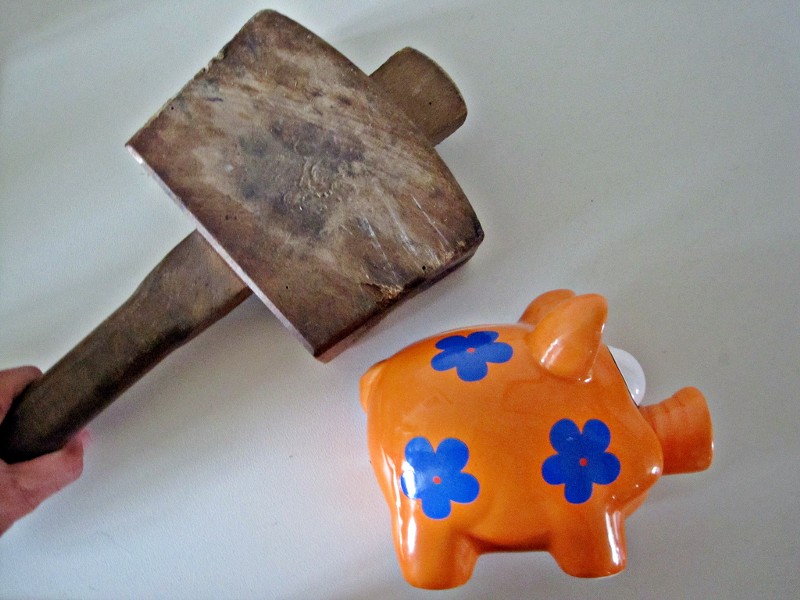By Kenneth Colón
Just because you don’t have $10M lying around to quit your job, hire an all-star team and launch a product with all the bells and whistles you could ever desire does not mean your product or startup idea is destined to fail. In fact, you’re probably better off this way. Some of the biggest, most successful startups today began as bootstrapped side projects.
I currently serve as CEO/Co-Founder of Izzy Care, a low-cost membership for unlimited, personalized primary care, mental health therapy, and nutrition & wellness coaching. It’s been featured in top healthcare publications like MedCity News, Healthcare Weekly, and Becker’s Hospital Review.
In this article, I want to offer a few tips to help you find your own path towards launching a successful tech product on a minimal budget, based off of my own learnings over the past few years. So let’s get started.
Make sure you’re solving a real problem
I imagine this seems obvious to a lot of people, and has been said countless times by people much, much smarter than I am. But, there’s a reason it’s been said so many times. I cannot stress it’s importance enough. You need to become obsessed with the problem, not potential solutions.
But how do you find a real problem that needs solving?
I’d suggest you start with your personal experience. What problems have you, or a loved one, faced? What drives you? For me, it’s my passion for mental health. I’ve struggled with depression, and unfortunately, so have many of my loved ones. This helps push me forward when being an entrepreneur isn’t so fun, and gives me unique insight into the problem that I wouldn’t otherwise have.
Focus on creating a solution to solve that problem.
You’ll also want to talk to your customers - friends, family, anyone that faces the problem you’re trying to solve. Find out the intricacies of the problems they face (their “pain points”), what they’re currently using to solve those problems, and why the problem still sucks.
Acquire the necessary skills
I often find that many would-be entrepreneurs are scared to take the jump into starting their own project or venture because they feel they lack the necessary skills to be successful. The good news is, you don’t need a college degree in CS or IxD, nor a masters in data science, to be a tech entrepreneur.
With so many resources available today, if you don’t know how to do something, you can learn it. Udemy, Coursera, YouTube, freeCodeCamp - these are all platforms where you can learn design, data science, and development.
For design, I personally recommend the Interaction Design Certificate program on Coursera by UC San Diego. For data science (more specifically, machine learning), I recommend SuperDataScience and their courses/certificates on Udemy.
Note: With software development in particular, you’ll need to commit serious amounts of time and effort to learning and mastering your craft. Two hours of half-hearted practice every other weekend won’t cut it.
Furthermore, you don’t have to master it all. This is where finding a team comes in. You can attend local meetups, hackathons, or connect with others online in forums and freelancing sites (a freelancing site is how I met my co-founder).
Connect with someone you know at school or work. Ideally, your team member will be someone with skill sets that complement your own, as well as someone who shares some of your passions. For me and my co-founder, that shared passion is health/medicine. Again, ideally, this will be someone you have (or are willing to develop) a close, trusting relationship with.
Start with design

Design is easy, cheap and fast to iterate on - no coding necessary, and you can start doing it yourself right away with just a pen and paper. Use what you know about the problem you’re trying to solve, and what you’ve gathered from your potential customers. You’ll want to design something specifically for your customers - “handcraft” the experience, as Brian Chesky, co-founder of Airbnb will say.
Sketch some ideas for what your product could look like in a notebook. Bring it back to your potential customers, get their input and feedback. Continue to iterate and improve. Eventually when you get more serious with your designs and move into prototyping, figure out what an actual website or mobile app will look and feel like. You can move up to easy to use, easy to learn classic design tools like Sketch (for mocking up your app) and InVision (for connecting the different screens of your app to make a clickable prototype).
Flex your creative muscles
If you’re going to design a solution that will really delight your customers, you’ll need to get creative. Use the 7-star experience framework, as explained by Brian Chesky on Reid Hoffman’s Master’s of Scale podcast. Chesky uses the example of his company, Airbnb, asking “what would a three-star Airbnb experience look like?”. Then take it a step further, “what’s an incredible, five-star experience look like?”. Now, what would a seven-star experience look like? or even a ten-star experience?
You can ask yourself these questions really about experience in any industry or facet of life - a seven-star doctor visit, a seven-star retail experience, even a seven-star commute to/from work or school. Use this framework to explore the possibilities of how you can solve your customer’s pain points and truly delight them. You may not be able to pull off the full extent of a ten-star experience, but you can work backwards from there to find something you can pull off that will have your customers raving about your product.
There are plenty of other exercises you can do for your creativity.
One of my favorites is listing ten ideas for a certain topic, like ten ways you (hypothetically) could improve your commute - knowing exactly how long your commute will take ahead of time, having breakfast freshly prepared for you and ready to go, etc. Then, once you have your ten, you force yourself to come up with another five more, then another five, and another five. You may find this method has you churning out ideas you never would have thought of otherwise. You can also try removing constraints - like what if your company reimbursed any form of travel to and from work. How would that change your list of ideas?
Sometimes, merely changing your setting can be enough to get ideas swirling in your mind. Personally, I like to take the occasional walk somewhere out in nature. Back near my old apartment, there was this hiking trail that barely anyone used. It was the perfect place for me to go to be alone with my thoughts, unencumbered by constant notifications and distractions.
Use both data and user feedback
Something to keep in mind when iterating on product at any stage is that you’ll want to use both hard, quantitative data (funnels, bounce rates, churn) and qualitative user feedback. Each will shed light on the other. Use just data, or just user feedback, and you’ll only be seeing part of the picture.
Self-funding your product

These skills you’ve taught yourself? You can now use them to make some initial capital to support yourself and your project. Sell your services on dedicated freelancing platforms like Upwork, Freelancer, Guru, and countless others… even sites like LinkedIn and Craigslist. Friends and even total strangers may want help in launching their own products, and now, you have the knowledge to help them.
Another option is trading - whether its stocks or cryptocurrency, swing trading or options trading. But be aware of the risk, and make sure you know what you’re doing, or else you can stand to lose a lot more than you’ve ever made. I personally don’t do much trading, and I haven’t had the most success with the little bit that I have done. I’d rather hold value long-term in projects/companies I believe in, but I know dozens of people who swear by trading and have the results to back it up.
Start selling, even before your product is finished
Imagine a conversation with a potential angel investor: “I need $100,000 to finish product development and run ads to see if there is demand” vs. “I have 1,000 pre-orders for my product, and need an investment of $100,000 to fulfill these orders, learn from these early customers, and start scaling.”
Which of these conversations do you think will go better?
Say you’re building a mobile app and accompanying subscription service. Even if your app isn’t ready, get a simple landing page up using a service like Carrd. This way, you can assemble a list of customers eager for the launch of your product. You can even offer some of these customers early access as beta testers, and guarantee them access to your fully launched product/service at a reduced rate.
A note on pricing
If you’re on a shoestring budget, you need to ensure your pricing allows you to be self-sustaining from day one, or at the very least, not losing you tons of money on each new user.
It’s a delicate balance between low pricing to entice new users and pricing high enough to be sustainable, even profitable. Look to the market, competitor pricing, and talk to your customers. It’ll take some trial and error, so don’t be afraid to experiment.
By experiment, I mean running the numbers yourself, seeing how much running your servers will cost, paying any necessary third parties, etc. NOT selling your product to a bunch of customers at a range of different prices ($10 to Customer A, $100 to Customer B). That’s one sure-fire way to piss off a lot of people.
Scaling and Unit Economics

Your focus at all times should be on scaling through word-of-mouth. If you nail your customer experience, and your users love your product, you can be sure they’ll tell their friends and family about it. This is by far the most powerful factor for growth. Think about Facebook or Airbnb. You probably heard about them first from a friend, long before you ever saw any ads.
If you’re not yet at the point where your customers are raving about you, or at the very least are satisfied enough with your product to tell their friends and family, keep iterating using data and user interviews/feedback.
If your unit economics are solid, that is, you’re making enough money on each individual purchase of your product to still profit whilst covering the cost of acquiring new users, you can consider accelerating your of your word-of-mouth growth with the two options below.
Paid Marketing Channels
The first is paid marketing channels, like Google and Facebook. Each platform carries with it different benefits, and better reaches different demographics. For us, Facebook makes a lot of sense, as we’re reaching mothers who make the majority of spending decisions for their families.
Only look into this option if you’re making enough on each purchase to sustain it, or you have a few hundred or thousand dollars to invest.
Digital marketing is something you can learn yourself online. Google even offers free online courses and certificates for Google AdWords and YouTube advertising. You can then sell your services with freelancing, and help others scale the growth of their products.
Incentivized Referrals
The second is paid word-of-mouth, or incentivized referrals. This works best when your product is already generating some natural word-of-mouth referrals. Examples of this might include referral discounts for a customer that refers their friend to the product, or a set dollar amount (or in a blockchain context, token bounty) for each sign-up a user drives to the platform. Your product already has people telling their friends. Fuel this fire with an added financial incentive.
Do note, however, that this can easily backfire if not handled correctly (or even if you handle it well). If and when you decide to stop paying users for referrals/sign-ups, they may be less likely to endorse your product, now seeing it as “free advertising” instead of telling a friend about an awesome product.
A final note on community building

As you begin to grow your user base, you’ll want to start paying attention to community building. The purpose of this is to cultivate a loyal fan base for your product, fans whom you keep up-to-date with all the latest on your project, and fans who will want to be the first to try your next product update. There are a few ways to do this.
Content Marketing
First is content marketing on sites like LinkedIn and Medium. These sites, in many instances, have strong, supportive communities who you can reach with your content and bring into your own product community.
This can be by way of regular written updates about you and your product. Telling your own personal story or the stories of your users (with their permission), or content that your existing or potential users may find helpful or interesting (like say a Medium article on how to launch a tech startup with a shoestring budget). You can cross-post your content on LinkedIn and Medium, as well as your own personal blog or other channels.
Email Lists
Updates on your product and team, as well as helpful and interesting content, can also be sent out through traditional email lists, with services like MailChimp. Just be sure to not spam your mail list or sign up people for your mail list without their permission.
Meetups
One great way to connect with your community is through Meetup groups. When creating a Meetup event, you can cross-post your event on Eventbrite to expand your reach. This is an easy way to get to know your users, build trust, and even connect with potential collaborators.
Telegram
The last one I’ll mention is Telegram, since it’s quite popular, especially among the blockchain/cryptocurrency community. Telegram is great for keeping groups up-to-date on the latest news, and fostering conversation between your team and the members of your community. At least in theory.
I personally find Telegram to be flooded with people trying to sell me their ICO marketing services (spamming other Telegram groups about your project for some ludicrous rate), or wanting to be an “ICO advisor”, whatever that means, for “just 2BTC a month, and 20% of all your tokens”. Thanks, but no thanks. ?
Wrapping Up
Like I said at the start, you don’t need a multi-million dollar budget to get your product up and running. All you need are the skills/experience, which you can acquire and monetize, and the patience to fail countless times on your road to success.
“But I have patience and experience. A man can do anything if he has those.” — Helmut Zemo, Captain America: Civil War

Focus on designing a solution specific to your customers, prototyping and iterating cheaply and quickly, selling before your product is finished, and scaling by word of mouth (with some added fuel once you have the fire burning).
And remember, anything you may not know now, you can learn! You don’t have to do it alone, either - look to your school, work, local and online communities to find someone with shared passions and a complementary skill-set.
Aside from some of the topics and resources mentioned here, there are a few books I’d definitely recommend to help in your entrepreneurial journey:
Misbehaving by Richard Thaler, and Contagious by Jonah Berger to learn more about behavioral economics, consumer adoption, and virality... and of course, The Lean Startup by Eric Ries, aka the Bible of failing fast, often, and cheaply on your road to success.
I hope this helps, and wish you all the best with your ventures! If I can ever be of any help, please don’t hesitate to reach out. Connect with me on LinkedIn or shoot me an email!
If you’re interested in unlimited, personalized primary care, mental health therapy, and nutrition & wellness coaching, you can learn more and sign up for Izzy Care today for less than the price of a single therapy session. Check us out on Product Hunt, and learn how you can participate in our $5M token airdrop.

